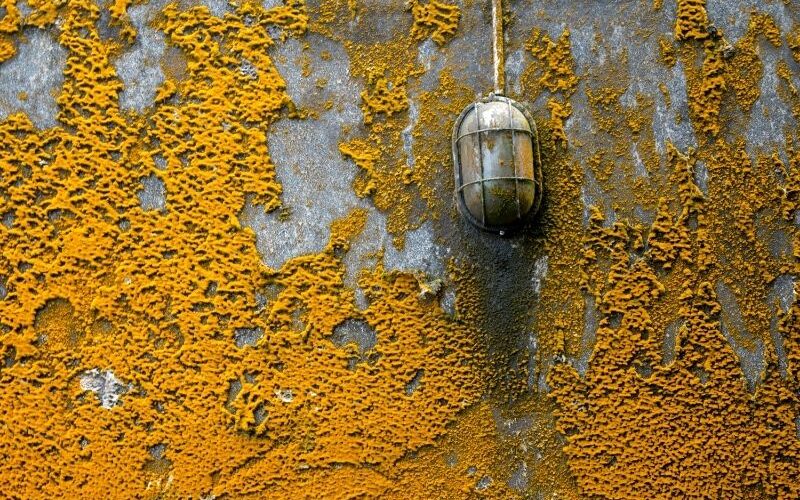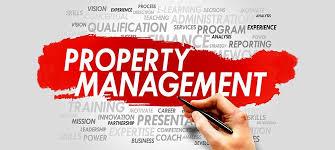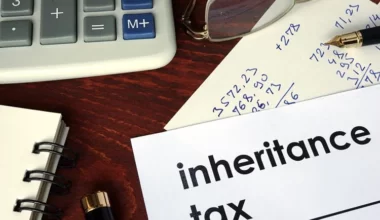Mold in your apartment is not only upsetting but also dangerous for your health. However, in most cases, you can prevent minor issues from becoming major ones. Mold and the health risks associated with it are a source of concern for renters everywhere. Mold control is a shared responsibility between tenants and landlords to ensure healthy living conditions. This article will go over mold symptoms in an apartment with an apartment tenant rights lawyer, as well as how to test and check for mold.
If you check and suspect (or know) that you have mold in your apartment, you may be concerned that your safe haven has become a health hazard. What can you do, and who is responsible for resolving the issue? The mold that grows on indoor surfaces can be harmful to your health, especially if you have a sensitivity such as allergies or asthma. That’s why it’s important to be on the lookout for mold symptoms, address mold issues as soon as they arise, and take steps to prevent mold growth in the first place.
Symptoms of Mold In Apartment
You might be surprised to learn that you already have mold symptoms in your apartment! The microscopic spores float through the air both inside and outside. They can enter your apartment through open windows or by riding on your or your pet’s back.
Fortunately, mold spores only grow indoors when they land on surfaces that are conducive to their growth. Mold symptoms in your apartment can be subtle if the affected area is small, or they can be dramatic if the mold has spread.
Here are a few symptoms of mold in an apartment to look out for:
- The smell of mildew or an earthy, musty odor pervades your apartment.
- You notice water damage like stains or bulging drywall.
- You have physical symptoms of mold sensitivity (especially in your apartment), such as a stuffy nose, watery eyes, coughing, or difficulty breathing.
- There are visible symptoms of mold growth on surfaces in your apartment.
Mold in Apartment Tenant Rights
Tenant have the rights to live in a mold-free apartment. A landlord is responsible for keeping their tenant’s rental home safe, habitable, and in good repair. Tenants should bring mold concerns to the landlord’s attention so that the landlord can address the issue.
Your rights as a tenant are unclear if you discover mold in your apartment. The first thing you should do if you suspect mold has infiltrated your apartment is to document the situation, it is your rights as a tenant on the property.
Suggestions for an action plan:
- Take pictures of visible mold growth on walls and floors. When it comes to proving that your apartment has mold, a picture is worth a thousand words.
- Keep a record of any mold testing that you or your landlord performs.
- Look for signs of mold in the home. People who lived there before may have had mold problems.
- If you want to break your lease, find out if legal aid is available in your area.
The Tenant Resource Center, for example, has a list of how various communities handle mold cases. Some landlords allow tenants to break their leases due to mold if they can demonstrate that it is an “imminent threat” to their health, whereas others require a doctor’s note or documentation from an environmental testing firm.
If you do not want to break your lease because of the mold problem, keep in mind that it is your landlord’s responsibility to resolve the issue. They need to hire experts and fix any problems with moisture that may have caused the mold to grow.
The Legal Rights of a Tenant Are If Mold Is Caused By Landlord Negligence In An Apartment
If you rent a property and discover mold, your landlord is required to remove it as long as they were aware of its presence at the time the lease was signed. This is true even if you did not notify them of the problem. If the landlord hasn’t hired a professional to get rid of the mold in your apartment, you can get help from a lawyer to see if they’re responsible for any health problems you’ve had, as well as any damage to your home or belongings.
How to Test for Mold in an Apartment
While the presence of mold spores should prompt you to contact mold remediation professionals, there are some things you can do on your own to test whether or not you have a mold problem in your apartment. If your test reveals signs of mold damage in your apartment as a result of a moisture problem, don’t wait to call in the professionals to test for mold.
#1. Consider the odor of the indoor air.
You should be able to detect the smell of the apartment as soon as you walk in. Mold spores frequently emit a musty odor that is unmistakable to the senses and is caused by moisture problems. Using candles or air fresheners to change the smell of the air could be a sign that your home has mold.
#2. Examine the apartment for discoloration.
Make your way through your apartment’s rooms, looking for water damage or the presence of mold on the walls or the floor. Though you can begin in areas where there is obvious moisture, such as the bathroom or laundry closet, keep in mind that mold can be found anywhere. Look for green, brown, or even black mold spots, but you may also notice a water stain on the ceiling or along the base of the wall. This could imply that water damage occurred in the past, potentially leaving mold to grow in an unnoticed location.
#3. Examine your overall health
Mold spores floating around in the air in your apartment, though invisible to the naked eye, can lead to and cause health problems. Even if you don’t normally suffer from allergies, mold can be toxic to the body and cause breathing problems as well as skin rashes. A persistent cough that does not seem to go away despite treatment could indicate that the air in the home is contaminated. Skin conditions such as psoriasis can also be linked to mold toxicity caused by water damage, and those whose bodies are dealing with fungus exposure may experience fatigue and weakness on a regular basis.
#4. Contact a professional mold remediation company.
Even if you performed your test and found no mold in your apartment, this does not guarantee that your air quality is satisfactory. Consider hiring Mold Remediation to conduct a thorough test of the air in your apartment. The air or surfaces in your home will be checked for mold with special equipment.
Lawyer For Mold In Apartment
If the mold in your apartment has significantly harmed your health, you’ll need a lawyer to sue your landlord or other responsible parties. In that case, the lawyer will have the mold in the apartment tested for toxicity as part of the “discovery” phase of the lawsuit—the time when each side can request and examine the other side’s facts.
A mold-in-apartment lawyer can assist you with any issues concerning a toxic mold claim. A mold lawyer is a personal injury lawyer who specializes in toxic mold claims. Toxic mold claims are complicated and necessitate a high level of expertise. There may be multiple areas of law involved, such as breach of contract claims and personal injury claims. A mold-in apartment lawyer can review your case, determine what claims you have, and represent you in court if necessary.
Small Claims Court Lawsuits Involving Mold
If you have mold-related losses (for a health problem or property damage), you may be able to sue your landlord in small claims court if your claim is between $3,000 and $10,000 (the small claims court limit in most states). For more information on small claims court, visit Nolo’s Small Claims Court & Lawsuits section, which includes instructions on how to do the following:
- This will determine whether you have a strong case or not.
- Write a letter of demand to your landlord (this type of letter is a requirement in many small claims suits).
- Prepare documentation for your mold-related losses.
- In small claims court, present your case, and
- Obtain a court judgment.
To find a lawyer with experience in mold in apartment cases, go to Nolo’s Lawyer Directory, where you can learn about each lawyer’s experience, education, and fees.
How to Check for Mold in an Apartment
Look for discoloration on surfaces with a slimy, fuzzy, or powdery texture to check for mold in your apartment. Mold can grow in difficult-to-find places such as behind wallpaper, inside vents, or in an attic or basement.
Check your mold inspection by inspecting your home or apartment for leaky pipes or any other signs or sources of moisture. Mold requires moisture to grow, so look for it in places and on surfaces that have recently been exposed to water, humidity, or condensation.
When you want to check for mold in your apartment, ask yourself the following three questions:
- Do you have mold in your house?
- What was the cause?
- Where exactly is it?
With answers to the above questions, you’ll have a much better chance of successfully removing the mold and keeping your house or apartment mold-free in the future. If you discover mold growing in your home, you must act quickly to locate and remove it.
Common Places Where Mold Hides.
Mold requires two things to thrive: moisture and some darkness. Places, where moisture is frequent or excessive, are prime spots for mold growth, especially if they don’t get a lot of light. Mold can be found in the following places: However, keep in mind that mold can grow anywhere indoors if the right conditions are met.
#1. Where there are leaks,
Mold frequently appears when there is a leak that causes a moisture problem. Mold may grow on ceilings or walls if structural issues allow moisture to enter. Another common cause is leaks around window frames.
#2. In your restroom.
Mold can also be hidden on shower walls and curtains, as well as around bathroom trim. It could be found under sinks or anywhere there is a damp environment caused by leaking pipes or condensation.
#3. Where do you do your laundry?
Your laundry room can become humid if your clothes dryer is not properly vented to the outside. Mold growth could be aided by excess moisture. Mold can also be found on damp towels that have been stored in a laundry hamper for an extended period of time, as well as on the walls of your laundry room.
#4. In and around windows,
If you have a lot of condensation on your apartment windows, check for mold around the window frame. Mold can also grow in curtains, blinds, and carpeting beneath windows that have a moisture problem.
#5. Concerning organic materials
Mold thrives on damp cellulose in particular. This includes cardboard, stacks of paper, books or magazines, ceiling tiles, wood, and anything else made of organic materials. Mold can also be found on (or behind) wallpaper, upholstery, and carpet.
What Should You Do If You Discover Mold in Your Apartment?
When you discover mold in your apartment, you must act quickly. Mold can spread if left untreated. It can also cause harm to whatever it is growing on.
#1. Consider the problem’s origin.
First, consider whether the source of the mold’s growth is something you can handle on your own. For example, if you discover mold in your shower, the solution could be as simple as cleaning it up and then cleaning your shower more frequently.
#2. Remove small mold patches from organic surfaces.
According to the EPA, if the affected area is less than 10 square feet (about a 33-foot area), you can clean mold from organic surfaces yourself. Cleaning methods will differ depending on the surface.
#3. Notify your property manager of any major issues.
If the mold is the result of an uncontrollable moisture problem or water damage, it’s time to contact your property manager. They must address the underlying issues that cause mold as soon as possible.
#4. Check your renters’ insurance policy.
If structural issues beyond your control cause mold damage to your personal property, check with your renter’s insurance company. You may have coverage that allows you to replace damaged items such as furniture, rugs, or clothing.
Conclusion
Mold may appear to be a source of concern, but in most cases, it is possible to prevent mold growth. When looking for a new place, read Rent.com apartment reviews to find the ideal rental and avoid any problematic properties. Before you move into a new apartment, thoroughly inspect it for signs of damage that could lead to mold growth. Keep your new home in good condition once you’ve moved in. A mold-free apartment is one that is clean, dry, and well-ventilated.
Frequently Asked Questions
Can you get sick from mold in your apartment?
Mold in your home can make you sick in some cases, especially if you have allergies or asthma. Mold exposure can irritate your eyes, skin, nose, throat, and lungs, whether you are allergic to mold or not. Here’s what you can do to combat mold and protect yourself and your home.
How long does it take to get sick from mold exposure?
These symptoms typically appear 2–9 hours after exposure and last 1–3 days. Other patients experience progressive shortness of breath, coughing, and weight loss. Work-relatedness may only become apparent during extended vacations if symptoms resolve and then reoccur when returning to work.
Is there a mold detector?
Mold testing kits assist you in detecting and identifying growing spores in your home by collecting samples from the air or the surface in question. Some provide immediate results, while others require you to package the samples and return them to a lab for a professional examination.
Can you stay in a house with black mold?
Because of the risks associated with mold exposure, sleeping in a mold-infested house, particularly in affected areas, can be dangerous because you put yourself at risk of mold allergies. This is especially concerning if you are allergic to mold.
Related Articles:






